Eltako FMZ14 Handleiding
Eltako
Niet gecategoriseerd
FMZ14
Bekijk gratis de handleiding van Eltako FMZ14 (4 pagina’s), behorend tot de categorie Niet gecategoriseerd. Deze gids werd als nuttig beoordeeld door 34 mensen en kreeg gemiddeld 4.7 sterren uit 17.5 reviews. Heb je een vraag over Eltako FMZ14 of wil je andere gebruikers van dit product iets vragen? Stel een vraag
Pagina 1/4

Multifunction time relay with 10 functions,
1 CO contact potential free 10 A/250 V AC,
incandescent lamps 2000 watts*, with
DX technology. Bidirectional. Only 0.4 watt
standby loss.
Modular device for DIN-EN 60715 TH35
rail mounting.
1 module = 18 mm wide, 58 mm deep.
Connection to the Eltako-RS485 bus. Bus
cross wiring and power supply with jumper.
Wireless window contacts (FTK) and
window handles at opened
windows with
the function NO or NC can be taught-in.
Several FTK and (or) window handles
are linked to each other. If a direction
switch is taught-in, a function (e.g. TI)
can be started using the top switch
(START) and stopped with the bottom
switch (STOP).
Patented Eltako Duplex technology allows
you to switch normally potential free
contacts in zero passage switching when
230 V A/C voltage 50Hz is switched.
This drastically reduces wear. To achieve
this, simply connect the N conductor to
the terminal (N) and L to K(L). This
results in an additional standby
consumption of only 0.1 watt.
If supply voltage fails, the two contacts
switch off. When power is restored,
contact 1 closes.
GB
Only skilled electricians may install
this electrical equipment otherwise
there is the risk of fire or electric
shock!
Temperature at mounting location:
-20°C up to +50°C.
Storage temperature: -25°C up to +70°C.
Relative humidity:
annual average value <75%.
RS485 bus actuator
Multifunction time relay
FMZ14
30 014 009 - 2
valid for devices from production week
40/17 (see bottom side of housing)
Typical connection
Time setting between 0.5 second and
20 hours.
Function rotary switches
Teach-in takes place using the top and
middle rotary switches and then the time
is set. T is the time base and xT the
multiplier.
The function is selected using the bottom
rotary switch:
RV = off delay
AV = operate delay
TI =
clock generator starting with impulse
TP = clock generator starting with pause
IA = impulse controlled operate delay
(e.g. automatic door opener)
EW = fleeting NO contact
AW = fleeting NC contact
ARV= operate and release delay
ON = Permanent ON
OFF= Permanent OFF
The LED below the upper function rotary
switch performs during the teach-in
process
according to the operation man-
ual.
It shows control commands by short
flickering during operation.
* The maximum load can be used
starting at a delay time or clock cycle
of 5 minutes. The maximum load will
be reduced for shorter times as follows:
up to 2 seconds 15%, up to 2 minutes
30 %, up to 5 minutes 60%.
Description of functions
t1 t2 t1 t2
TI
Wireless
input
K(L)- 2
t t
ARV
Wireless
input
K(L)- 2
t1 t2 = 3s
IA
Wireless
input
K(L)- 2
t
EW
Wireless
input
K(L)- 2
Wireless
input
K(L)- 2
AW t
t1 t2 t1
TP
Wireless
input
K(L)- 2
t
AV
Wireless
input
K(L)- 2
Wireless
input
K(L)- 2
t
RV
Teaching-in wireless sensors in wire-
less actuators
All sensors must be taught-in in the
actuators so that they can detect and
execute commands.


After the address of the FAM14 was
assigned, its lower LED flashes green
for 5 seconds and the LED of the FMZ14
goes out.
Delete device configuration:
Set the middle rotary switch to CLR.
The LED flashes nervously. Then turn
the upper rotary switch within 10 seconds
3 times to the leftmost stop (anticlock wise)
and turn it back again. The LED stops
flashing and goes out after 5 seconds.
The factory settings are restored.
Delete device configuration and device
address:
Set the middle rotary switch to CLR. The
LED flashes nervously. Then turn the upper
rotary switch within 10 seconds 6 times
to the leftmost stop (anticlock wise) and
turn it back again. The LED stops flashing
and goes out after 5 seconds. The factory
settings are restored and the device
address deleted.
Configure FMZ14:
The following points can be configured
with the PC tool PCT14:
■duty cycle pulse control (IA)
■teaching-in of wireless pushbuttons
with single or double click
■add or change sensors
CAUTION! Don't forget 'disconnect FAM'
in the PC tool. While the connection
from the PC tool to the FAM14 exists,
no wireless commands are executed.
Teach-in confirmation telegram of
another bus actuator to the FMZ14:
As in the teach-in procedure, only set
the middle rotary switch to LRA instead
to LRN.
Teach-in 'switch OFF' as 'central OFF'.
When an actuator is ready for
teach-in (the LED flashes at a
low rate), the very next incoming
signal is taught-in. Therefore,
make absolutely sure that you
do not activate any other sensors
during the teach-in phase.
!
Eltako GmbH
D-70736 Fellbach
Technical Support English:
Michael Thünte +49 176 13582514
thuente@eltako.de
Marc Peter +49 173 3180368
marc.peter@eltako.de
eltako.com
34/2017 Subject to change without notice.
Must be kept for later use!
We recommend the housing for operating
instructions GBA14.
Teaching-in sensors
1.Set the top rotary switch to the required
teach-in function:
2 = teach-in 'central OFF';
3 = teach-in universal switch;
5 = teach-in direction switches;
Direction switches are completely
taught-in automatically when operating
the top or bottom pushbutton. The
side on which the pushbutton is first
operated is defined for START and the
other side for STOP.
6 = teach-in FTK and window handle
as NC contact;
8 = teach-in FTK and window handle
as NO contact.
2. Set the middle rotary switch to LRN.
The LED flashes at a low rate.
3. Operate the sensor to be taught-in.
The LED goes out.
To teach-in further sensors, turn the
middle rotary switch briefly away from
position LRN. Continue the procedure
from pos 1.
Set the time after teach-in with the mid-
dle and top rotary switches.
Teaching-in actuator FMZ14
The teach-in memory is clear on deliv-
ery from the factory. To ensure that a
device was not previously taught-in,
clear the complete memory:
Turn the middle rotary switch to CLR.
The LED flashes at a high rate. Within
10 seconds, turn the top rotary switch
three times to right stop (turn clock-
wise) and back again. The LED stops
flashing and goes out after 2 seconds.
All taught-in sensors are cleared.
Clear single taught-in sensors: in the
same way as in the teach-in procedure,
except that you set the middle rotary
switch to CLR instead of LRN, and oper-
ate the sensor. The LED previously flash-
ing at a high rate goes out.
Assign device address for the FMZ14:
The rotary switch on the FAM14 is set to
position 1, its lower LED flashes red.
The middle rotary switch of the FMZ14 is
set to LRN, the LED flashes smoothly.
Product specificaties
| Merk: | Eltako |
| Categorie: | Niet gecategoriseerd |
| Model: | FMZ14 |
Heb je hulp nodig?
Als je hulp nodig hebt met Eltako FMZ14 stel dan hieronder een vraag en andere gebruikers zullen je antwoorden
Handleiding Niet gecategoriseerd Eltako
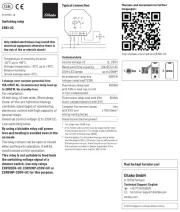
14 April 2025
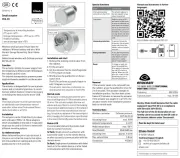
14 April 2025

13 Maart 2024

21 Februari 2024

21 Februari 2024

21 Februari 2024

21 Februari 2024

20 Februari 2024

20 Februari 2024

20 Februari 2024
Handleiding Niet gecategoriseerd
- Yamazen
- Ariston Thermo
- Innoliving
- ISDT
- PurAthletics
- Projecta
- XYZprinting
- Deutz
- Crane Song
- Sesame Street
- Fixpoint
- Nedis
- Naturn Living
- Ubiquiti Networks
- Stamony
Nieuwste handleidingen voor Niet gecategoriseerd

31 Juli 2025

31 Juli 2025
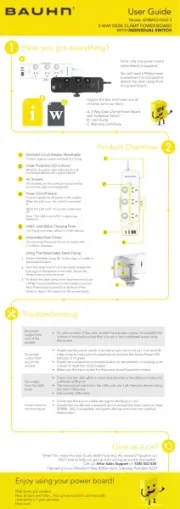
31 Juli 2025

31 Juli 2025
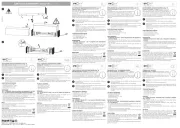
31 Juli 2025
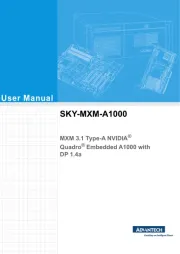
31 Juli 2025

31 Juli 2025

31 Juli 2025
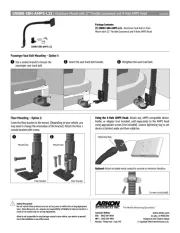
31 Juli 2025
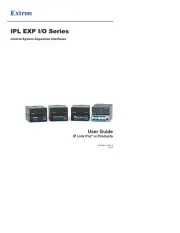
31 Juli 2025